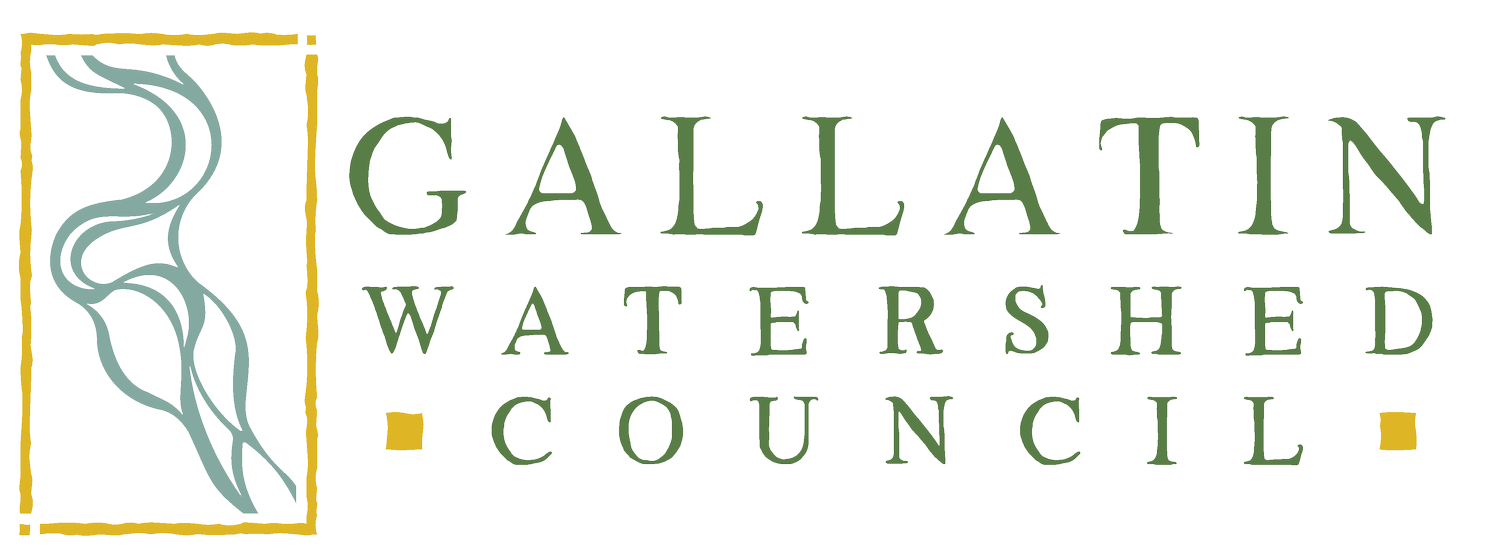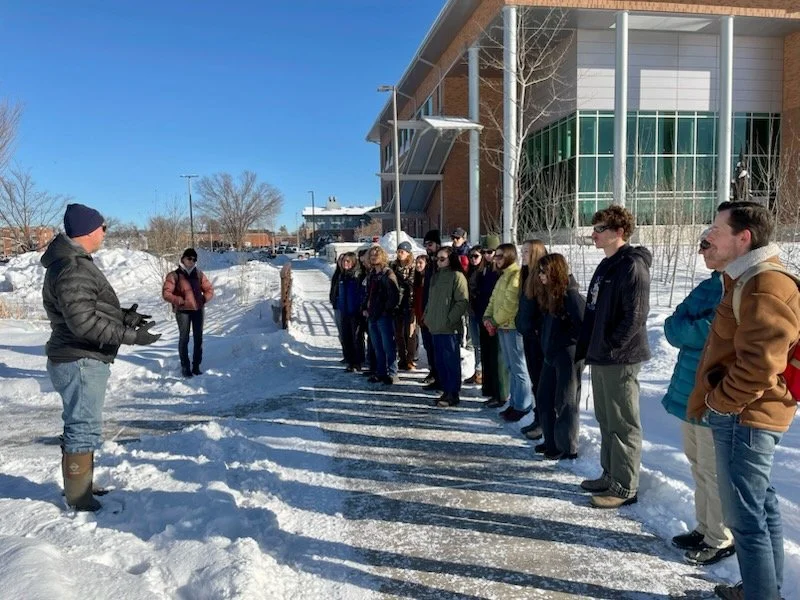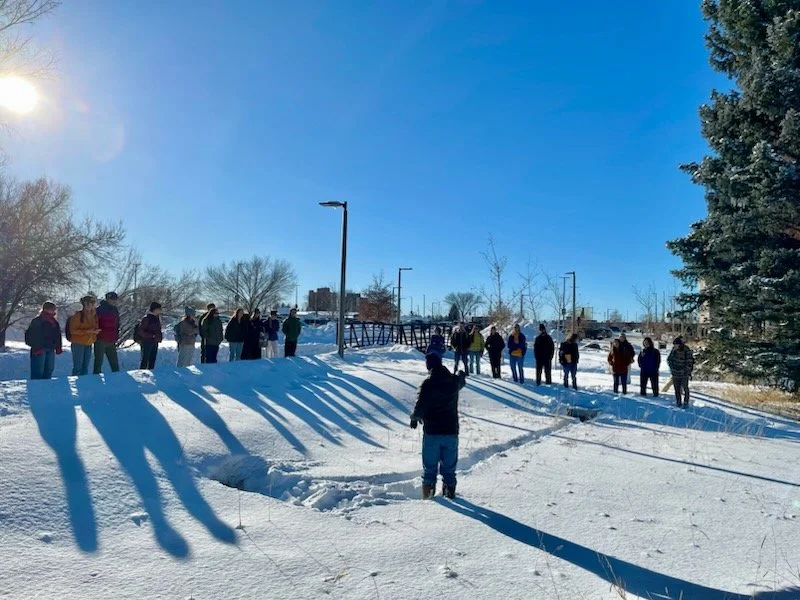CATS Program Partnership: Researching the Impact of Vegetation on Stormwater Quality
Stormwater basins lie in wait under the snow, ready for warmer temperatures that will bring a flush of snowmelt from parking lots, sidewalks, and rooftops. This particular basin is on the MSU Campus and will capture pollutants and mitigate flooding in Mandeville Creek before the urban waterway winds through the rest of the city and out to the East Gallatin River.
The Gallatin Watershed Council and MSU’s Environmental Science Capstone class joined Russel Smith from the City of Bozeman’s Stormwater Division for a tour around campus. We learned the ins and outs (literally) of “post-construction stormwater facilities,” how they work, are maintained, and their specific design features.
Russel Smith gave an overview of the Stormwater Division to the MSU Environmental Capstone class (ENSC499).
GWC and the City of Bozeman are teaming up with CATS (Community-engaged And Transformational Scholarship), a Western Transportation Institute initiative, to utilize the capacity and curiosity of MSU students to help us address local watershed priorities. This semester, students will investigate if and how native plants may be effectively incorporated into stormwater facilities in the City of Bozeman to further the Stormwater Division’s goals: protect public safety, improve waterway health, mitigate flooding, and comply with state and federal regulations.
This research question about vegetation in stormwater facilities was instigated when the City of Bozeman announced in 2024 that it would be updating its Stormwater Facilities Plan, a document that guides how post-construction facilities are maintained, enforced, and adhere to best management practices. There are approximately 1,500 existing stormwater detention and retention facilities across the City of Bozeman, 1000 of which are privately owned and maintained by Home Owners Associations. Many of these facilities have become overgrown with trees and shrubs, and are considered out of compliance. The current practice requires that stormwater facilities be maintained to their original design specifications and that all the volunteer trees and shrubs be removed.
The Gallatin Water Collaborative, a group of almost 50 stakeholders across the Gallatin Valley, identified stormwater management as a priority action to protect water quality and availability. The group was formed in 2021 to unify local efforts to protect, restore, and enhance water resources in the Lower Gallatin Watershed. Many in the Collaborative saw the Stormwater Facility Plan Update as an opportunity for innovation.
Vegetation, when incorporated effectively into stormwater facilities, can facilitate water infiltration, reduce pollutant loads, and stabilize soil. Native wetland and riparian vegetation is known for its ability to improve water quality in surface water and shallow groundwater and is a fundamental tool in stream and wetland restoration, agricultural best management practices, and treatment wetlands. The Stormwater Division is obligated by their MS4 (Municipal Separate Stormwater and Sewer System) permit to address sediment, which is easily settled out in detention basins. In addition to abiding by the regulations in the MS4 permit, the Stormwater Division also strives to improve watershed health. Our urban streams provide significant recreational and ecological value and are tributaries to the East Gallatin River, so designing facilities that target other pollutants, such as nitrogen and phosphorus, is important too. The question becomes: When is vegetation beneficial in stormwater facilities to achieve co-benefits while still maintaining compliance with the MS4 permit?
Russel uncovered and explained the components of a stormwater facility on campus, next to Mandeville Creek.
The CATS program has been pivotal in helping to facilitate connections between our community’s research needs and MSU’s technical capacity and expertise. GWC and partners in the Gallatin Water Collaborative have been fortunate to utilize the CATS program to help with other priorities, including Dr. Sarah Church’s Geography 425: Geographical Thought, which compiled a literature review of existing drought plans across the arid west to inform local water managers in the development of a Drought and Deluge Adaptive Management Plan for the Gallatin Watershed. Other CATS projects we are excited about this semester are Geography Capstone: Siting regional stormwater facilities to maximize community and ecological value, and Geographical Planning: Understanding stormwater pond maintenance programs through community case studies.
By engaging MSU students and faculty through the CATS program, GWC and its partners are able to tap into the technical expertise needed to address pressing local water issues. We are excited to see how the findings from this semester's research will help inform best management practices for Bozeman’s stormwater facilities.


